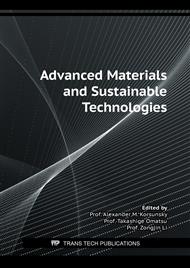p.153
p.161
p.167
p.175
p.183
p.191
p.199
p.205
p.213
Effect of Ferronickel Slag as Cementitious Material on Strength of Mortar
Abstract:
In this work, the performance of mortar made with ferronickel slag (FNS) as cement replacement was investigated. The granulated FNS was ground to obtain a fineness higher than cement. To assess the performance of FNS in fresh and hardened mortar, the workability, flexural, and compressive strength were experimentally assessed. Based on the results obtained, the fluidity of mortar increased with increasing FNS content. It was found that FNS did not promote the compressive strength of mortar in the early days of curing, but at longer curing times the FNS starts to react. Although there is a decrease in flexural strength of mortar containing FNS, this result tends to be better than the compressive strength performance. The presence of FNS in mortar increased the porosity.
Info:
Periodical:
Pages:
213-218
Citation:
Online since:
September 2022
Keywords:
Price:
Сopyright:
© 2022 Trans Tech Publications Ltd. All Rights Reserved
Share:
Citation:



